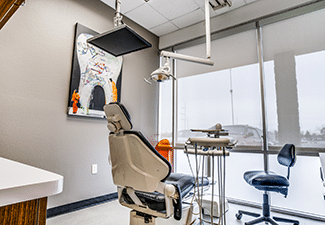 Knowing your teeth well is the first step to giving them the excellent care they deserve. Although most people can recite the main reasons why you should brush and floss your teeth at least twice a day, not nearly as many can describe the anatomy of your tooth, or even how many different kinds of teeth there are in a human mouth. If you’d like to learn more about the tools that allow you to eat and speak, review these tooth facts, brought to you by your Dallas area dentist Dr. Truong.
Knowing your teeth well is the first step to giving them the excellent care they deserve. Although most people can recite the main reasons why you should brush and floss your teeth at least twice a day, not nearly as many can describe the anatomy of your tooth, or even how many different kinds of teeth there are in a human mouth. If you’d like to learn more about the tools that allow you to eat and speak, review these tooth facts, brought to you by your Dallas area dentist Dr. Truong.
Get to Know Your Teeth
- Humans develop two separate sets of teeth in our lifetimes; our first set consists of 20 baby teeth (or milk teeth) that usually begin to fall out by age six. Our baby teeth are replaced by our 32 permanent teeth, which grow in stages until about 12 years old (the last teeth to grow in are our wisdom teeth, which typically begin to grown in during the late teens and early twenties.
- Our mouths contain four different kinds of permanent teeth: incisors, canines, premolars, and molars (wisdom teeth are considered third, or last, molars).
- The human tooth is divided into two main parts: the crown, which protrudes above the gum line and is the only part of the tooth that is visible. The crown is protected by a layer of enamel, a highly mineralized substance that is almost as hard as diamond. The enamel does not extend under the gum line to protect the second half of your tooth, the root, which anchors into your supporting jaw bone.
- Each of your teeth is comprised of four different kinds of tissue. As stated above, the enamel is the strongest substance your body produces, and protects the crown of your tooth. Dentin is the tissue that lies under the enamel and gives your tooth its white color (enamel is actually translucent). Dentin is calcified, but not as dense as enamel, and also contains tiny tubules that allow sensory information to reach the center of your tooth. Cementum covers the roots in much the same enamel does the crown, but cementum is softer and also aids in supporting the tooth. Lastly, the pulp lies at the center of your tooth and contains bundles of your tooth’s blood vessels and nerves. Diseased pulp is usually the material removed during a root canal procedure.
The tooth is an interesting body part. It is important, as well. To learn about protecting your teeth and keeping them healthy, call Viva Dental in Dallas today at (214) 337-7800. If you live in Richardson, subscribe to this blog to learn when our Richardson office opens!












